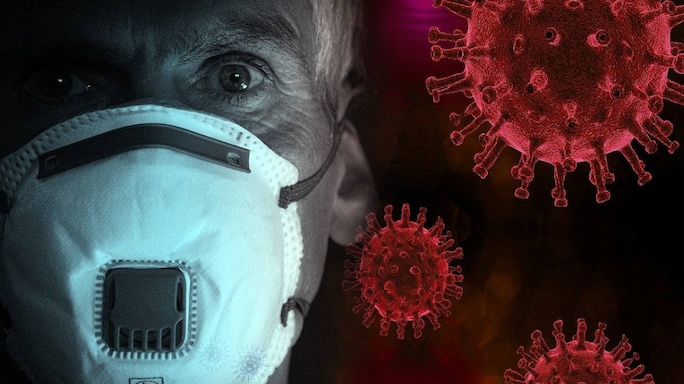- HOME
- /
- Health & Wellness
- /
- Health
- /
Five (More) Myths About COVID-19-Debunked!
Don’t let misinformation guide you. Get the facts right here
 Photo: Pixabay
Photo: Pixabay
Myth 1: Pets can spread the new coronavirus
The novel coronavirus is believed to have originated in animals, with most support indicating bats or pangolins as the hosts from which humans first contracted the disease. Since then the virus has spread through person-to-person transmission. However, this is not the first time the world has encountered such a phenomenon. “There are a number of viruses that have been transmitted from animals, such as SARS, MERS and HIV, which have also then spread to, and from, humans.
However, despite its animal origins, “The COVID-19 cannot come from any pets or domestic animals,” says Dr Vikas Maurya, director & head, department of pulmonology & sleep disorders at Delhi’s Fortis Hospital, Shalimar Bagh. “However, it’s important to remember that this is a novel coronavirus, which means we are still learning about it and evidence may lead us to believe otherwise,” he cautions.
Indeed, the myths vs facts section on the WHO website, which stated that pets cannot catch the COVID-19 virus is no longer there. According to the World Organization for Animal Health, there have so far been two cases of pet dogs in close contact with infected owners that have tested positive for the COVID-19 virus. However, their website also states, “There is no evidence that dogs play a role in the spread of this human disease or that they become sick. Further studies are underway to understand if and how different animals could be affected by COVID-19 virus.”
As a precautionary measure, pet owners should maintain extra hygiene standards—washing hands after handling a pet, their food or supplies, as well as avoiding kissing, licking or sharing food. Experts say there is no reason to panic until we learn more.
Myth 2: Vitamin C can prevent catching COVID-19 virus
“There is some evidence to suggest that vitamin C can protect you from certain viral infections, such as the influenza or rhinoviruses—the predominant cause of the common cold—but not the COVID-19 virus. The novel coronavirus and the influenza virus are quite different,” says Dr Sundeep Salvi, director of Pulmocare Research and Education Foundation in Pune.
“Having said that, I would encourage people to consume a lot of fruits, citric or otherwise, not only because they contain vitamin C, but also because they contain a lot of other very useful nutrients that build up the immune systems in our nose and throat. Daily consumption of at least a bowl of two different kinds of fruits is a good idea, for general immunity, not specifically to protect against the COVID-19 pathogen. A person who regularly consumes fruits stands a much better chance of protection from infections than those who do not, even while they are, in general, healthy.”
Myth 3: Spraying alcohol or chlorine all over the body or bathing in hot water can protect people from the new coronavirus
As a pathogen that attacks the respiratory system, the COVID-19 virus cannot be ‘cleaned out’ once it enters the body, according to the WHO. The only way to protect yourself is to prevent droplets containing the virus released by an infected person, from coming in contact with your body’s most exposed entry points—the nose and mouth, and to some extent, the eyes.
Both alcohol and chlorine are good disinfectants but these are meant only for hard surfaces and should be used as recommended on the product containing them. Neither of these chemicals are safe to use on your body. At best, they can cause irritation, dryness and peeling. More seriously, they can lead to rashes and burns or worse. Inhaling the fumes from these liquids could damage the sensitive respiratory tract as well.
Hand sanitizers, which contain alcohol, are specially prepared to be safe for use on the body, but only externally. Make sure you use them very carefully as they are highly inflammable. If overused, they could also lead to excessive dryness and irritation, and should never be consumed.
Myth 4: You need to be with an infected person for 10 minutes to be in danger of catching the novel coronavirus
Says Dr (Major) Monica Barne (Retd), from Pulmocare Research and Education Foundation,“The latest WHO data says that the virus is airborne. This means that a person who may be a carrier of the COVID-19 virus, but doesn’t realize it because of a lack of symptoms, could sneeze in one place and walk away, while another person walks into the same spot, while the virus is still suspended in the air. The second person would get infected, even though he or she has followed all the required protocols. This is why, masks were at first thought to be required for certain people only, such as Covid patient caregivers, but it is now clear that masks are needed for everyone.”
“The same logic holds true for surfaces—any surface that comes in contact with multiple people, such as an elevator switch, stair banisters, doorbells, counter-tops or even currency notes, is likely to be touched by someone who may be infected. The next person who touches the same surface is now infected too,” Barne explains. Daily wipe-downs of all such surfaces with alcohol-based disinfectants are therefore important hygiene practices both now and in general.
Myth 5: The new coronavirus was deliberately created or released by people
Since early January, conspiracy theorists have been spreading the word that the novel coronavirus outbreak is a bioweapon, engineered by humans and released, either deliberately or accidentally to the public to wreak havoc on global economies and politics. This claim was supported by the fact that Wuhan, China, the first known location from which the virus was transmitted from an animal to humans, is close to the Wuhan Institute of Virology, whose labs study the world’s deadliest viruses. The belief became widespread enough to cause many, including some world leaders, to dub the pathogen as a “Chinese virus” or the “Wuhan virus”.
However, a new study titled The proximal origin of SARS-CoV-2 has debunked this claim and states that the virus is natural and not man-made. “Evidence shows that SARS-CoV-2 is not a purposefully manipulated virus … we do not believe that any type of laboratory-based scenario is plausible,” the study says.
Kristian Andersen, co-author of the study, told Sciencenews.org that analysis of the genetic makeup of SARS-Cov-2 virus has made this clear “almost overnight”. Human-made viruses would require scientists to manipulate existing viruses and introduce new components and properties but the novel coronavirus virus has characteristics totally different from any previously known viruses, so this must be from a completely new, so far undiscovered, one.






